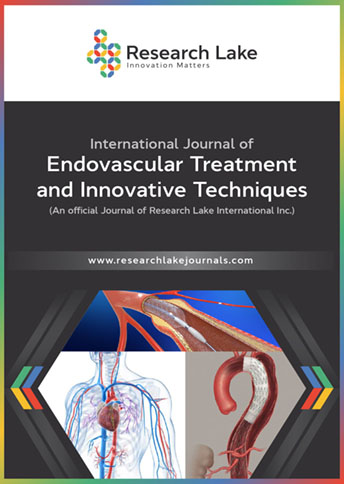The Primary patency in endovascular treatment of femoropopliteal lesions with Eluvia Paclitaxel-Eluting Stent: single-centre experience.
Primary patency in endovascular treatment of femoropopliteal lesions with Eluvia Paclitaxel-Eluting Stent
Abstract
Restenosis of the obstructive lesions in the superficial femoral or proximal popliteal artery, treated with angioplasty or bare nitinol stenting, frequently occurs. Paclitaxel-eluting stents have been developed to protect against restenosis with the sustained antiproliferative agent release over time.
The aim of this study was to report the results about the primary patency in a cohort of patients with long and complex femoropopliteal lesions treated with the Eluvia Drug-Eluting Vascular Stent.
The single-center, retrospective, single-arm, study enrolled 61 patients with chronic, symptomatic or asymptomatic, lower limb ischemia and stenotic or occlusive lesions in the superficial femoral artery or proximal popliteal artery. Mean lesion length was 129,3 ± 88,6. Efficacy measures at 18 months included primary patency, defined as duplex ultrasound peak systolic velocity ratio of ≤2.4 and the absence of target lesion revascularization or bypass.
The Kaplan–Meier estimate of primary patency through 18 months was on average 83% and precisely 87.5% for patients TASC II A, 91% for patients TASC II B, 83% for patients TASC II C and 73% for patients TASC II D. Six months after the initial procedure primary patency was on average 91,5% and precisely 87.5% for patients TASC II A, 91% for patients TASC II B, 89,5% for patients TASC II C and 100% for patients TASC II D. No stent fractures were identified, and no major target limb amputations occurred.
This study confirmed the efficacy of he paclitaxel-eluting Eluvia stent to treat long and complex femoropopliteal lesions.
Copyright (c) 2021 Annarita Dapoto, Angie Devetti, Alessandro Vit, Andrea Pellegrin, Vladimir Gavrilovic, Nicola Marotti, Alessandro Pauro, Roberto Da Ros, Paolo Frigatti, Massimo Sponza

This work is licensed under a Creative Commons Attribution-NonCommercial 4.0 International License.
Copyright © by the authors; licensee Research Lake International Inc., Canada. This article is an open access article distributed under the terms and Creative Commons Attribution Non-Commercial License (CC BY-NC) (http://creativecommons.org/licenses/by-nc/4.0/).











